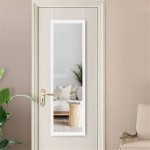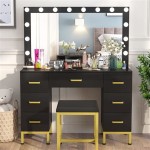Mirrored Light Bulbs: Functionality, Aesthetics, and Applications
Mirrored light bulbs, characterized by their reflective coating typically applied to the bulb's surface, represent a distinct category within lighting technology. Their primary function extends beyond mere illumination; they influence the direction, intensity, and quality of light emitted, offering both practical and aesthetic benefits. This article will explore the functionality, varieties, applications, and considerations surrounding mirrored light bulbs.
Understanding the Functionality of Mirrored Light Bulbs
The core principle behind a mirrored light bulb is the redirection of light through reflection. Standard incandescent or LED bulbs radiate light in all directions. A mirrored coating, typically made of a metallic substance such as aluminum or silver, is applied to a portion or the entirety of the bulb's surface. This coating reflects a significant portion of the light emitted from the filament or LED back towards the un-coated area, concentrating the light output in a specific direction. The level of reflectivity directly impacts the intensity and directionality of the light beam.
The areas covered by the mirror coating vary depending on the desired effect. Some bulbs feature a mirrored crown, which reflects light upwards towards the ceiling or downwards onto a task area. Others are completely mirrored, except for a small aperture, producing a highly focused beam of light. This controlled distribution of light is essential for accent lighting, spotlighting, and other applications where precise illumination is required.
The mirrored surface not only redirects light but also reduces glare. By reflecting light away from the observer's direct line of sight, mirrored bulbs can create a more comfortable and visually appealing lighting environment. This is particularly beneficial in settings where direct, intense light can be distracting or cause eye strain.
Additionally, mirrored light bulbs can contribute to energy efficiency in certain applications. By focusing the light output where it is needed most, they can reduce the amount of overall light required to achieve the desired illumination level, thus saving energy compared to omnidirectional bulbs. This is particularly true in applications like spotlights and display lighting.
Types and Characteristics of Mirrored Light Bulbs
Mirrored light bulbs come in a variety of shapes, sizes, and base types to suit different fixtures and applications. Common shapes include standard A-shape bulbs, reflector bulbs (R-bulbs), parabolic aluminized reflector bulbs (PAR-bulbs), and globe-shaped bulbs. The specific shape and reflective coating influence the beam angle and overall light distribution.
Reflector bulbs (R-bulbs) are characterized by their internal reflective coating, typically aluminum, that covers a significant portion of the bulb's surface. This coating directs the light forward, creating a focused beam suitable for recessed lighting and track lighting applications. PAR bulbs are similar to R-bulbs but have a thicker lens, providing greater control over the beam angle and intensity. They are commonly used in outdoor lighting and spotlights.
The base type of the bulb is another critical factor in determining compatibility with existing fixtures. Common base types include Edison screw bases (E26, E12, E11, E17) and bayonet bases. It is essential to choose a bulb with the correct base type to ensure proper installation and functionality.
The color temperature and CRI (Color Rendering Index) of mirrored light bulbs also influence the overall lighting effect. Color temperature, measured in Kelvin (K), determines the warmth or coolness of the light. Lower color temperatures (e.g., 2700K) produce a warm, yellowish light, while higher color temperatures (e.g., 5000K) produce a cool, bluish light. CRI measures the ability of a light source to accurately render colors compared to natural daylight. A higher CRI indicates better color accuracy.
Beyond these essential characteristics, mirrored bulbs are now increasingly available with LED technology. LED mirrored bulbs offer significant advantages over traditional incandescent versions, including lower energy consumption, longer lifespan, and improved durability. They generate less heat, making them safer to use in enclosed fixtures and reducing the risk of fire hazards.
Applications of Mirrored Light Bulbs
Mirrored light bulbs find widespread use in a variety of residential, commercial, and industrial applications. Their ability to provide focused, directional light makes them ideal for accent lighting, task lighting, and display lighting.
In residential settings, mirrored bulbs are commonly used in recessed lighting fixtures, track lighting systems, and pendant lights to highlight artwork, architectural features, or specific areas of a room. Their ability to reduce glare makes them suitable for bedside lamps and reading lights, creating a more comfortable and relaxing ambiance.
Commercial applications include retail stores, restaurants, and galleries. Mirrored bulbs are used to illuminate merchandise, highlight menu items, and create visually appealing displays. Their ability to focus attention on specific objects or areas makes them an effective tool for attracting customers and enhancing the overall shopping or dining experience.
In museums and art galleries, mirrored light bulbs are essential for showcasing artwork and artifacts. Their ability to provide precise, controlled illumination ensures that the objects are displayed in their best light, highlighting their details and colors without causing damage or glare.
Stage lighting also benefits significantly from the use of mirrored bulbs. Their focused beams create dramatic effects, highlighting performers and setting the atmosphere for theatrical productions, concerts, and other live events. The ability to control the direction and intensity of the light is crucial for creating visually engaging and impactful performances.
Beyond these common applications, mirrored bulbs are also used in specialized settings such as dental offices and medical examination rooms. The need for precise, focused illumination in these environments makes mirrored bulbs an ideal choice.
Considerations When Selecting and Using Mirrored Light Bulbs
Selecting the appropriate mirrored light bulb requires careful consideration of several factors, including the desired lighting effect, the type of fixture, and the specific application. It is essential to choose a bulb with the correct shape, size, base type, color temperature, and CRI to achieve the desired results.
The wattage of the bulb is another important consideration, particularly when replacing incandescent bulbs with LED alternatives. LED bulbs consume significantly less energy than incandescent bulbs, so it is essential to choose a bulb with the equivalent light output (measured in lumens) rather than simply matching the wattage.
The beam angle, measured in degrees, determines the spread of the light beam. A narrow beam angle (e.g., 15 degrees) creates a focused spotlight effect, while a wide beam angle (e.g., 60 degrees) provides broader illumination. The choice of beam angle depends on the specific application and the desired lighting effect.
Compatibility with dimming switches is another important consideration, particularly if the bulb will be used in a fixture that is connected to a dimmer. Not all LED bulbs are compatible with dimming switches, so it is essential to choose a bulb that is specifically designed for dimming applications. Using an incompatible bulb can result in flickering, buzzing, or premature failure.
Safety is also a crucial consideration when using mirrored light bulbs. It is essential to ensure that the bulb is properly installed and that the fixture is rated for the wattage of the bulb. Over-wattage bulbs can overheat and create a fire hazard. It is also important to avoid touching the bulb with bare hands, as this can leave oils on the surface that can damage the reflective coating or shorten the lifespan of the bulb.
Finally, the disposal of mirrored light bulbs should be done responsibly. Incandescent bulbs can be safely disposed of in regular trash, but LED bulbs and fluorescent bulbs contain small amounts of mercury and should be recycled properly. Many retailers and municipalities offer recycling programs for these types of bulbs.

Halogen Globe Bulb G125 Lateral Mirror Cable

Decorative Golden Mirrored Light Bulb E27 G125 6w 3000k

Silver Mirrored Golfball Dimmable Led Light Bulb Buy Direct

Bulbrite 60w 120v A19 Half Mirror E26 Base 60a19hm Bulbs Com

Porcelain Iii Mirrored 6 Watt E27 Matte White Led Light Bulbs Tala

Silver Mirrored Golfball Dimmable Led Light Bulb Buy Direct

Light Bulb 24v 250w Mirrored E27 Osram Lightspares

B P Lamp Mirrored Top Round 25 Watt Bulb Com

Ideal Lux Head Mirrored Lamp Led Incandescent E27 4w 230v

Mirrored Top Round 25 Watt Bulb 47156 Antique Lamp Supply Quality Parts Since 1952








